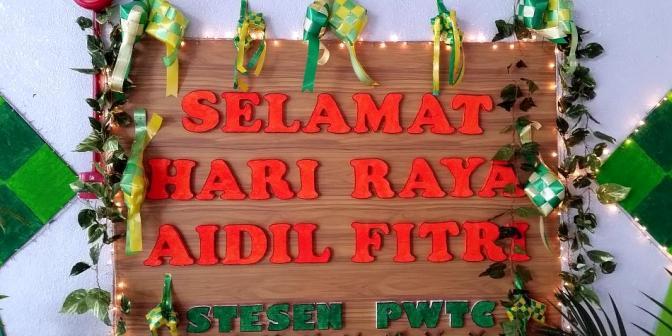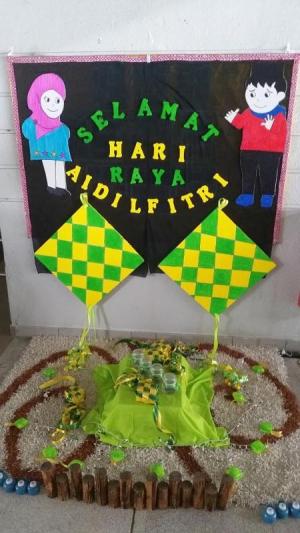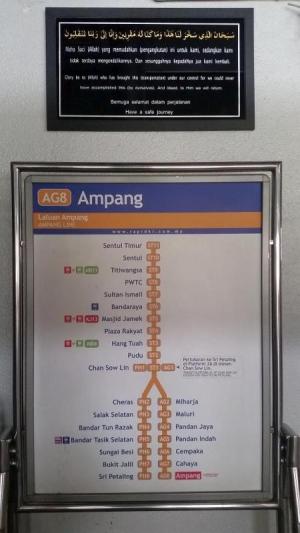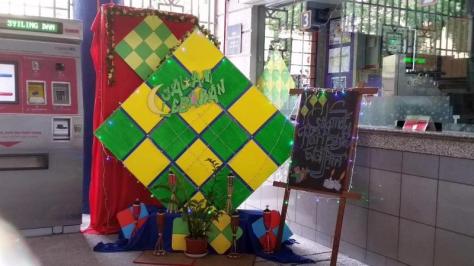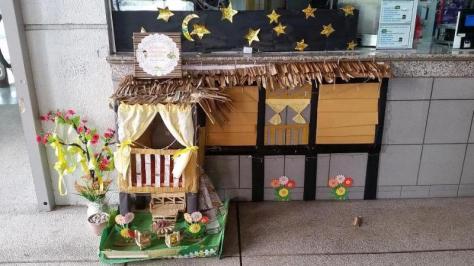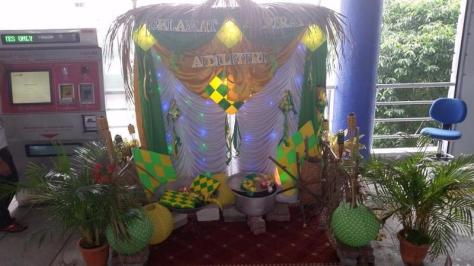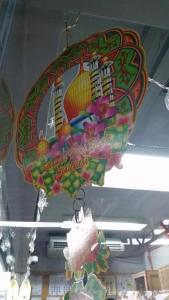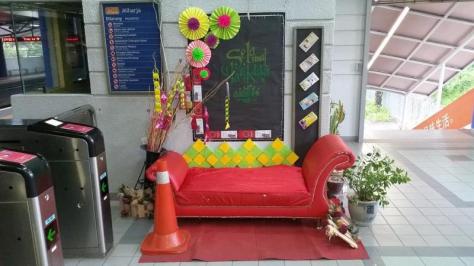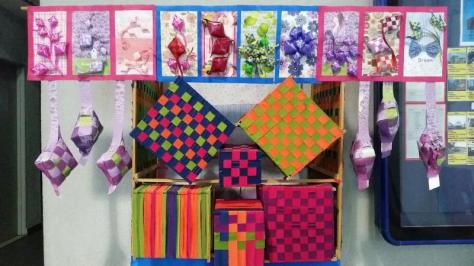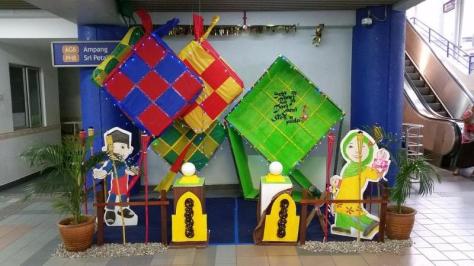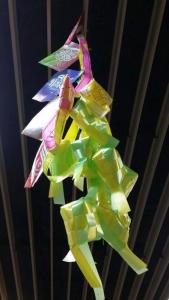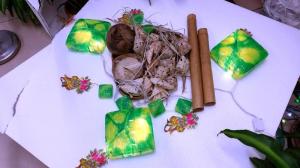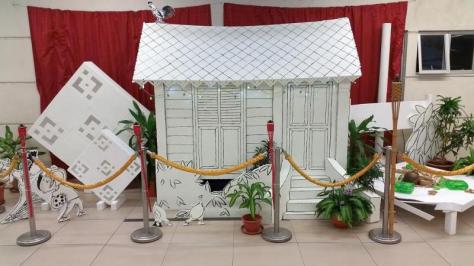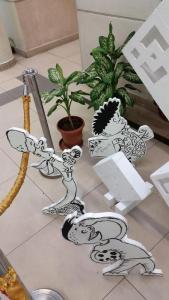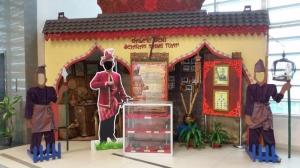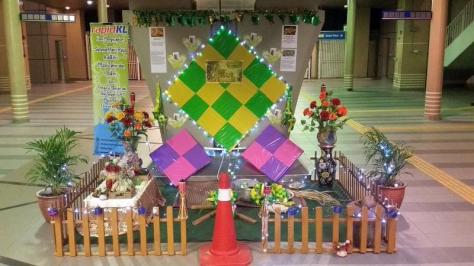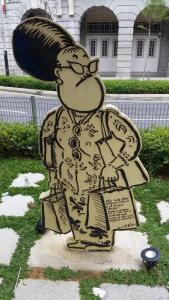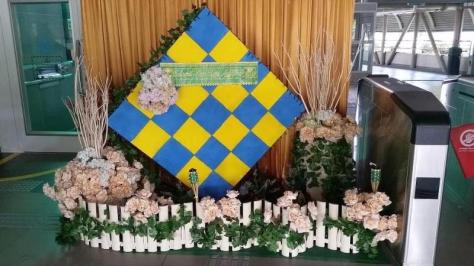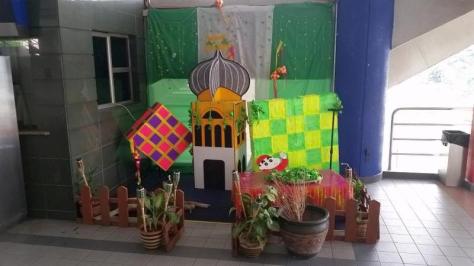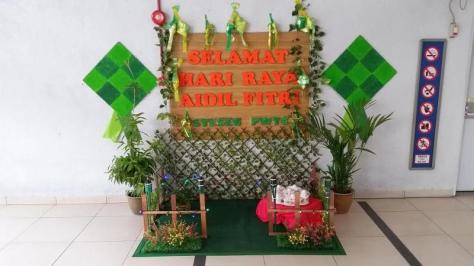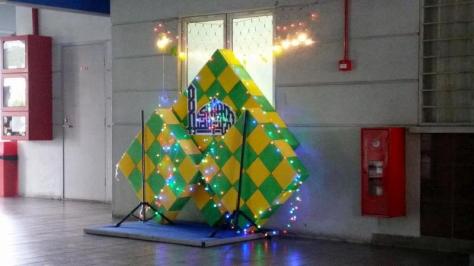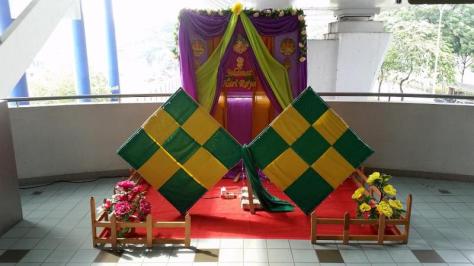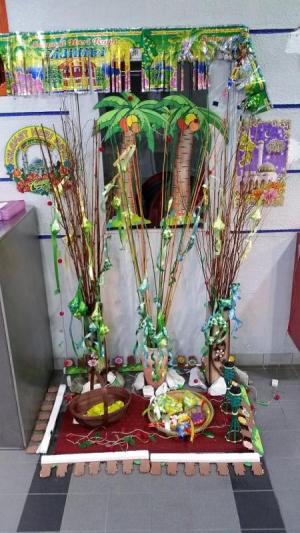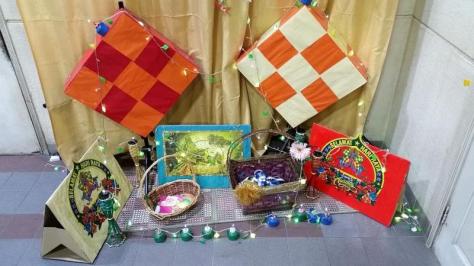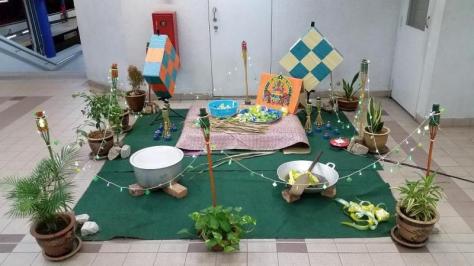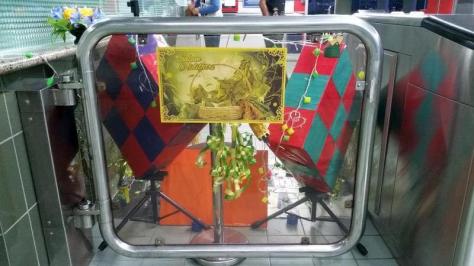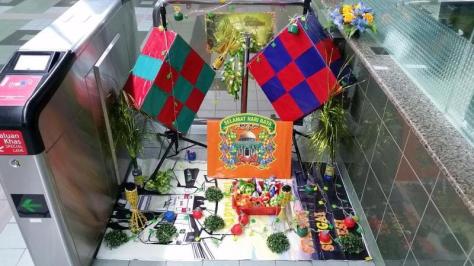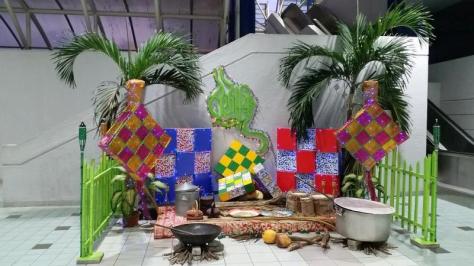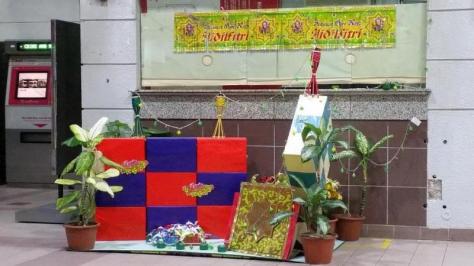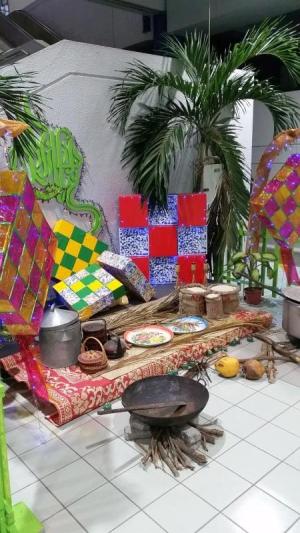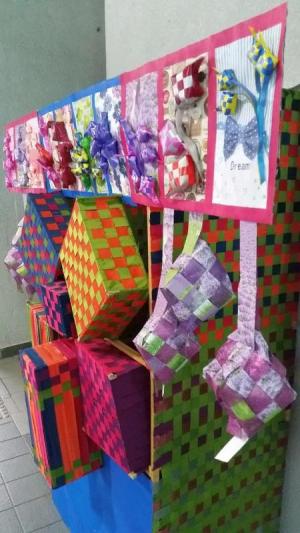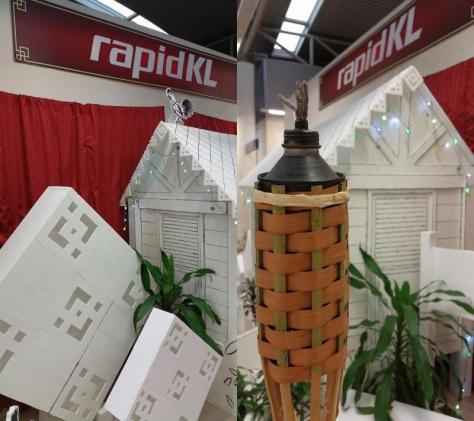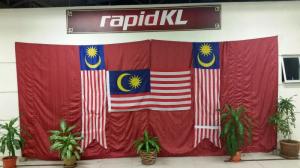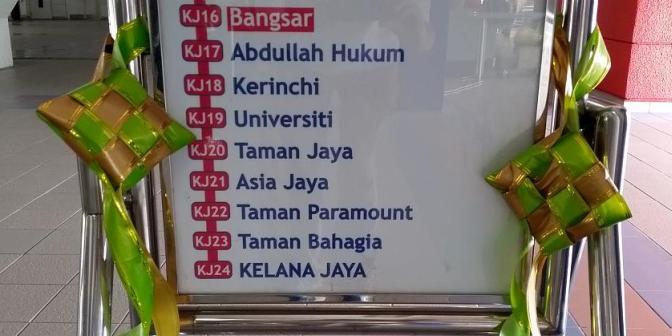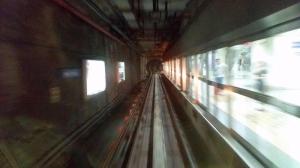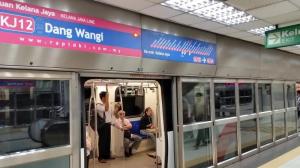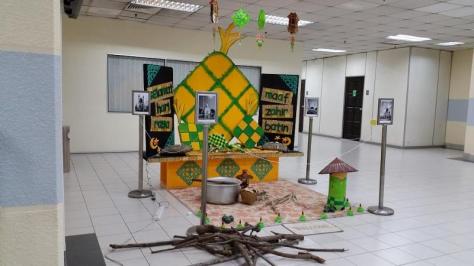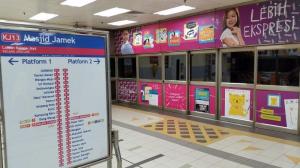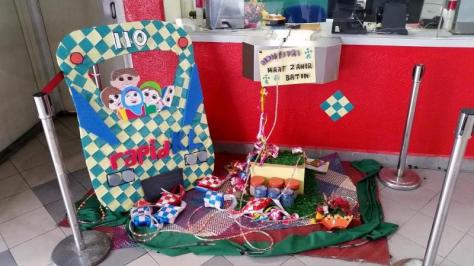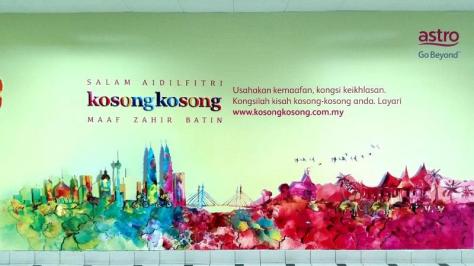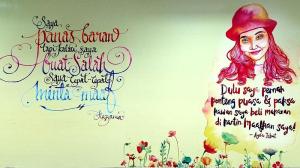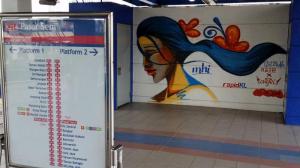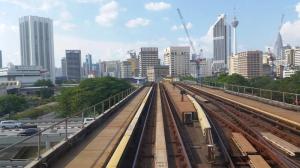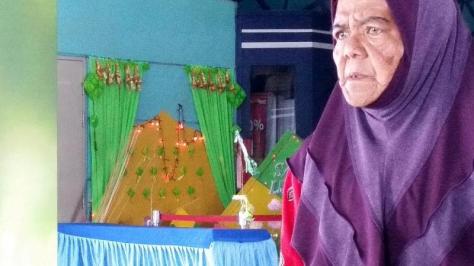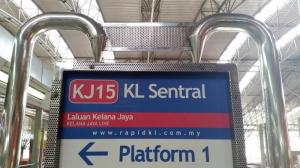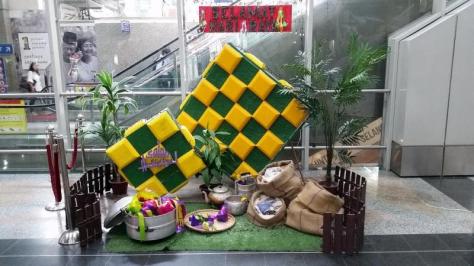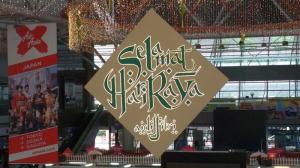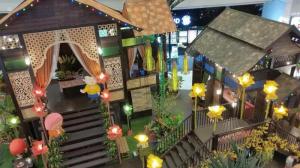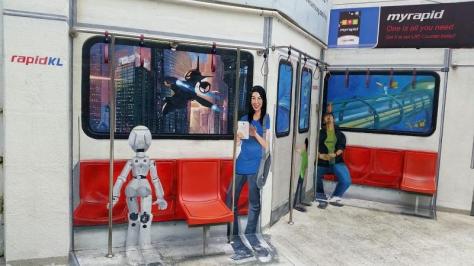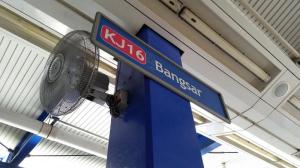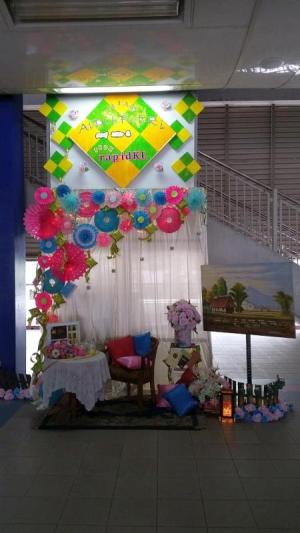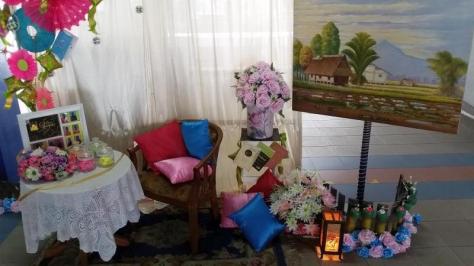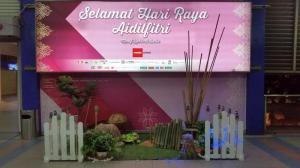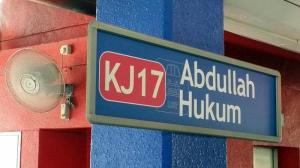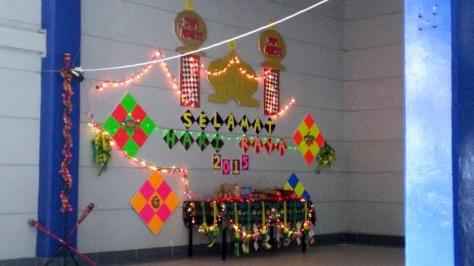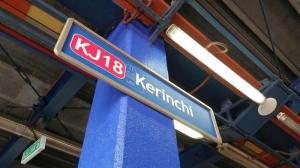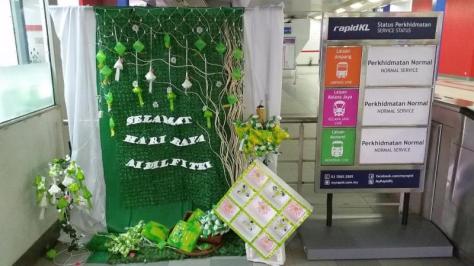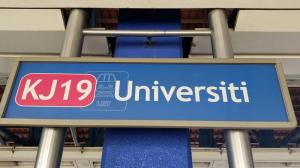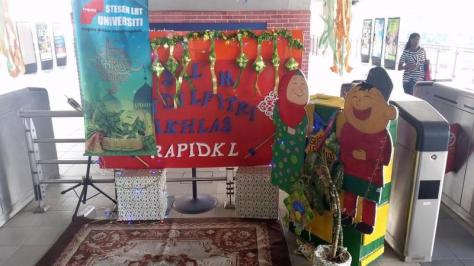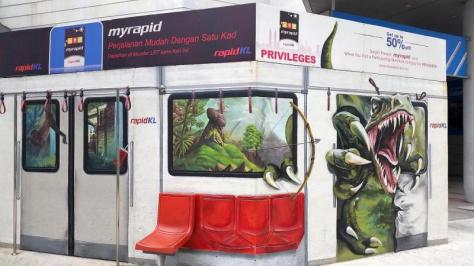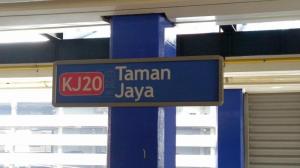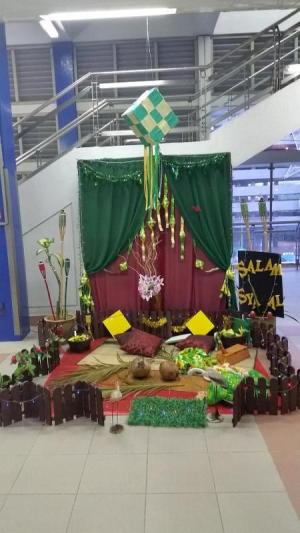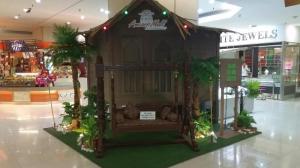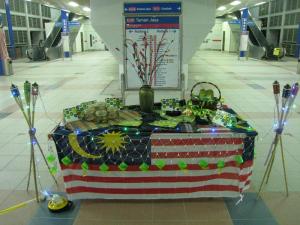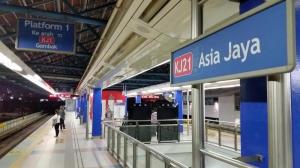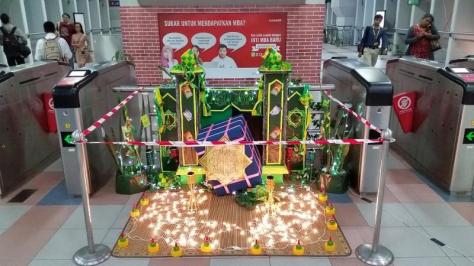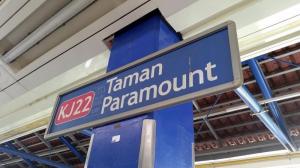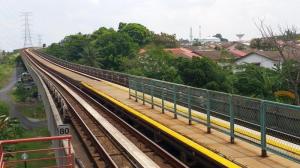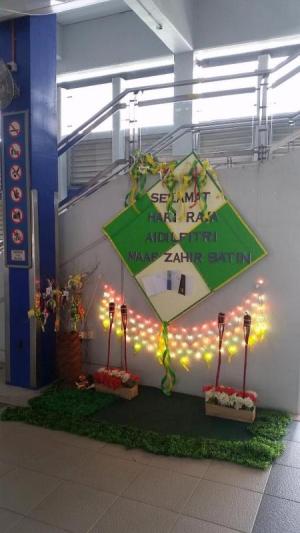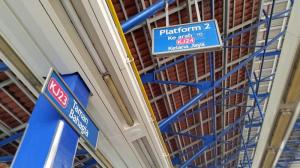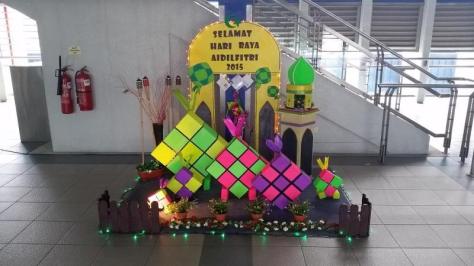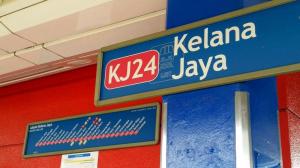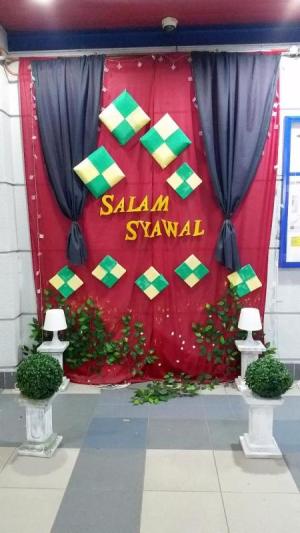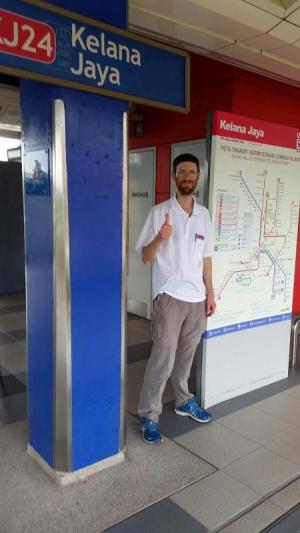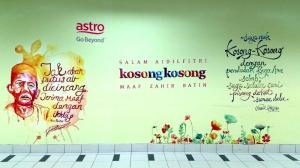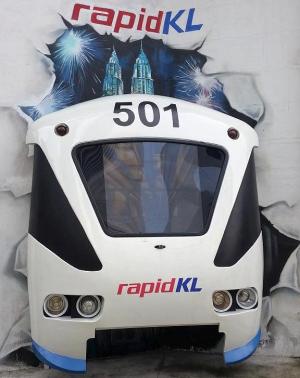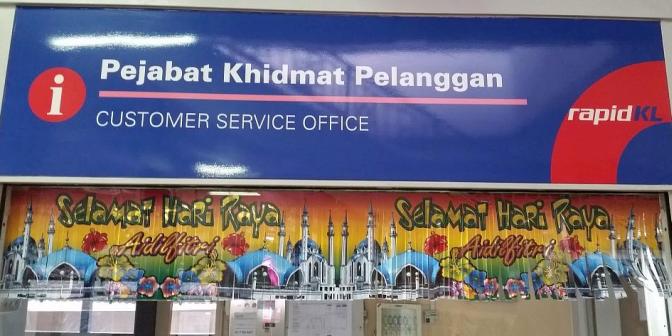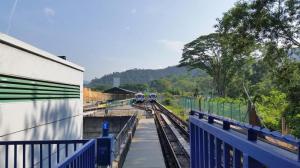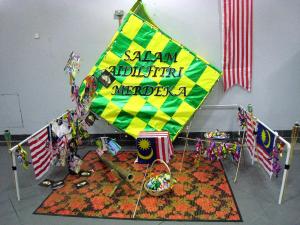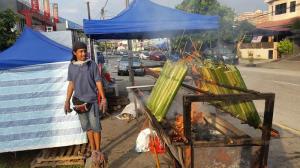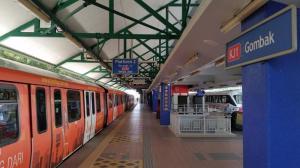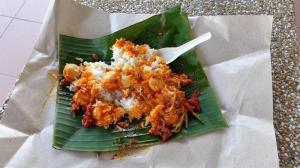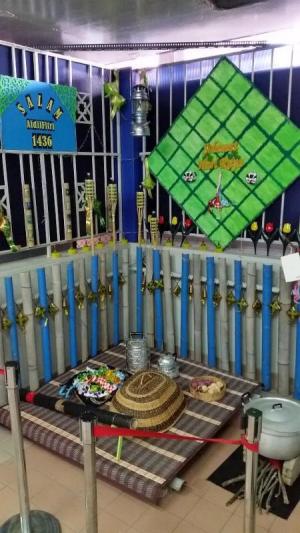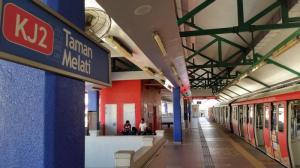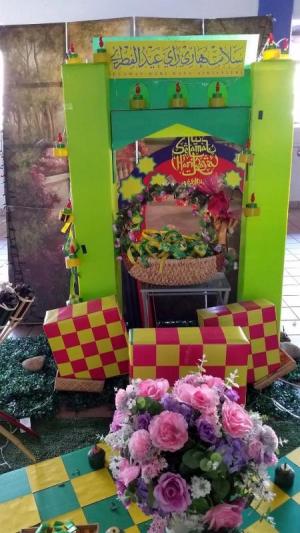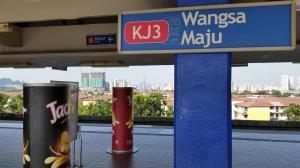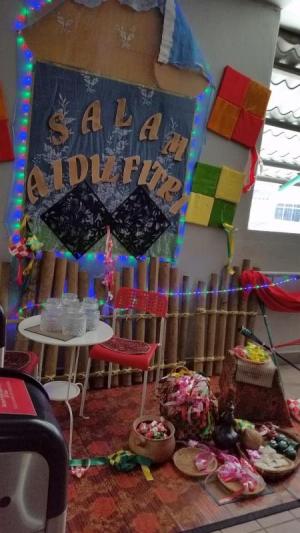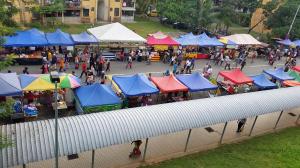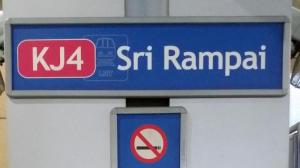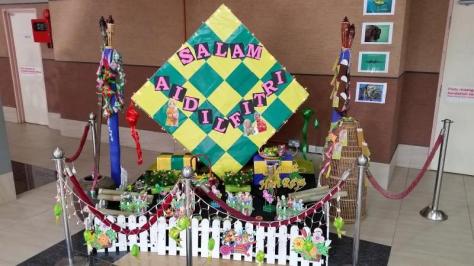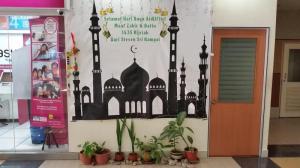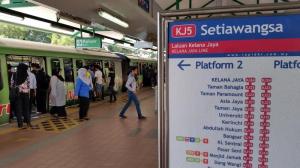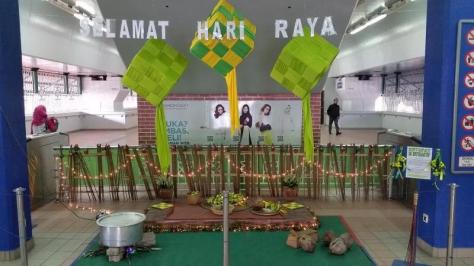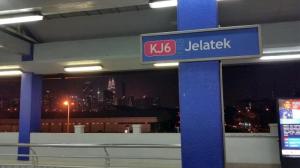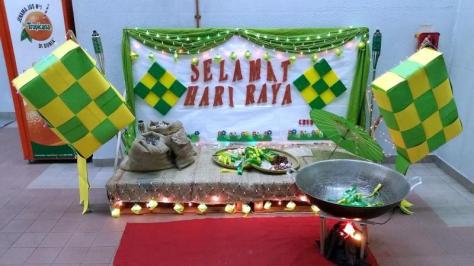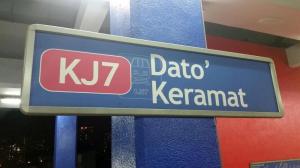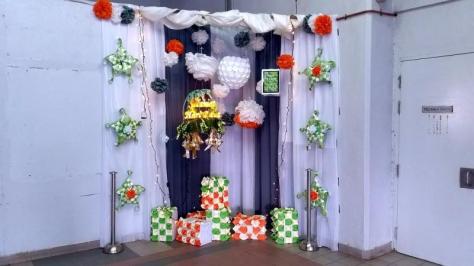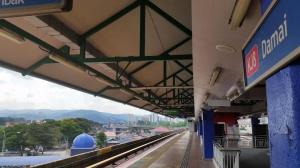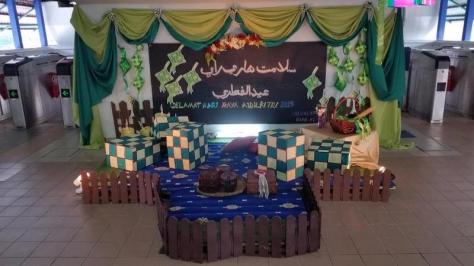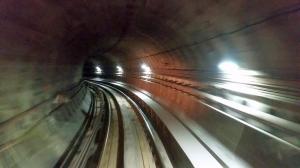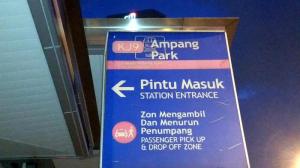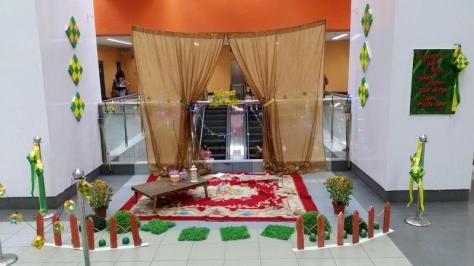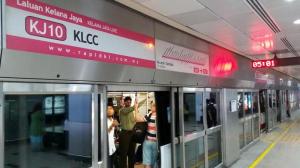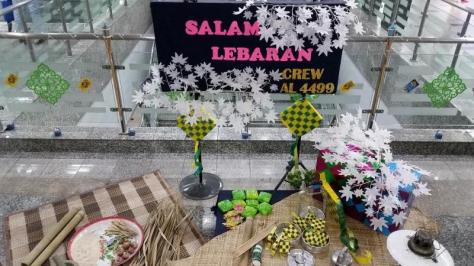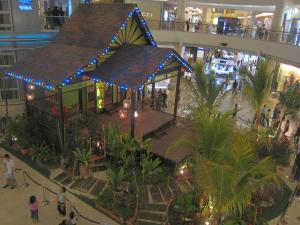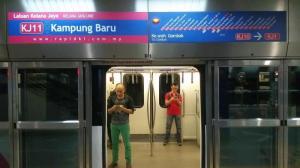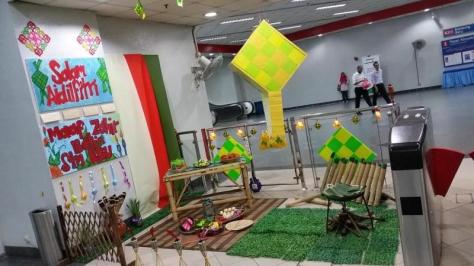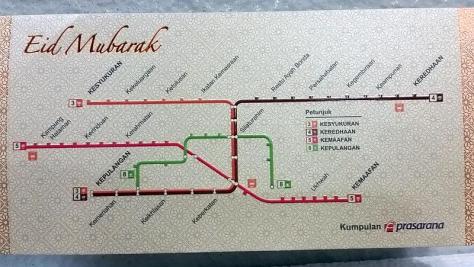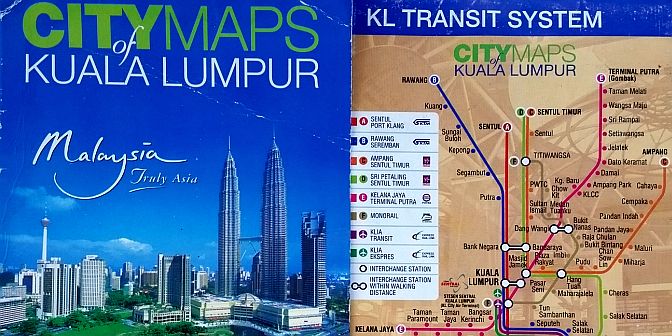More end-of-Ramadan decorations and snippets of Malaysian culture as I visit each station on the Ampang Light Rail Transit line in Kuala Lumpur.
I’m back in Malaysia’s capital of Kuala Lumpur, where I spent six months in 2012, and I arrived during the fasting month of Ramadan. To re-map the city in my mind, while learning more about Malay customs, I’ve been visiting the Light Rail Transit (LRT) stations to view their decorations for Hari Raya or Eid at the end of Ramadan. You can see what I’ve learned so far about city and culture, food and forgiveness, at Rapid KL Ramadan: Hari Raya Blessings on the LRT, continued in Rapid KL Ramadan – Part Two. In those posts I traversed all 24 Light Rail Transit (LRT) stops on the Kelana Jaya line, my home track of 2012.
The Ampang Adventure
The next challenge was to hit the LRT stations on the Y-shaped Ampang Line. It has 27 km of track through 25 stations, with no tunnels so there are city views all the way (for more details, see Wikipedia). The Ampang line trains are older than on the Kelana Jaya line (although a new fleet is arriving this year), with human drivers instead of automation and carriages that are more chunky and square. A few of their Hari Raya displays showed more creative flair. (Click on any photos below to zoom.)
The Ampang Line would take me to less familiar terrain than the Kelana Jaya line. I’d been to none of these stations this year, except Masjid Jamek where the two lines cross, so there were no shortcuts this time. I had to disembark at each stop (though found a few stations had already dismantled their displays), and chose to complete each branch of the Y on three successive afternoons.
In 1857 a local Raja sent 87 Chinese up the river and through the jungle to mine for tin in this area. 69 died of malaria within a month and more men were sent. The mines flourished, forming the first settlement of Kuala Lumpur and leaving several lakes in the former pits – I jog around one every week. Reflecting this history, “Ampang” means dam in Malay. As I took a Saturday afternoon bus down Jalan Ampang to pick up the northeast terminus at Ampang Station, the vehicular flow seemed to be dammed and I almost wished I’d walked. At last the station sign appeared and I clambered out of the bus, up and over the pedestrian bridge, and commenced phase two of my Ramadan railway ramblings.
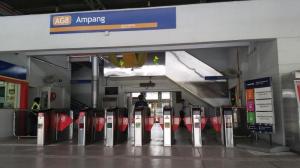 AG8 – Ampang
AG8 – Ampang
A bright display at the first station, with season’s greetings in Malay and transliterated Arabic, and objects I often saw on my previous ride. There were pelita or small lamps at the corners, and many checkered green and yellow artificial ketupat – the theme specified by Rapid KL for this year’s Hari Raya station decorations. The real items are woven from palm leaves and packed with rice that’s boiled into a solid cake. (I described ketupat more fully near the start of my first post in the series.)
A new feature was the Muslim prayer above the route plan on the way to the platform – Malaysia Airlines displayed the same prayer after the safety video just before taking off.
Once on board and waiting for the train to depart, I was pleased to see what is now a less common phenomenon: a girl was reading a bona fide physical book! A heartening sight, and the name of my next stop even means radiance or light. It seemed an auspicious start.
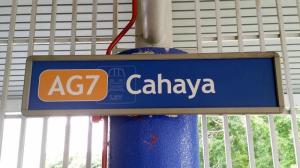 AG7 – Cahaya
AG7 – Cahaya
Ketupats big and small alongside the ticket machine, along with pretty blackboard calligraphy and oil wick lamps, which were elsewhere mounted on bamboo poles.
These first stations are among the smallest in the city, just a solid awning over platforms either side of the rails, with no attached shops or indoor hallways.
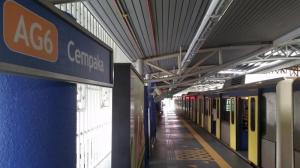 AG6 – Cempaka
AG6 – Cempaka
My dictionary says cempaka is a flowering shrub like frangipani. I spotted a pinboard with a few flat paper ketupats over the ticket gates and wasn’t too impressed, then found the main display beneath the service counter. It was a model village house, complete with thatched roof and furniture of clothes pegs, recalling the rocking chair I once made at a craft class in school holidays. Providing relief from the oversized ketupats of most displays, this just had cute little ones like blossoms on the tree.
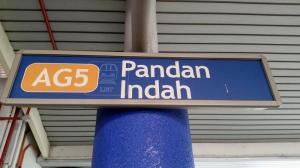 AG5 – Pandan Indah
AG5 – Pandan Indah
More thatching and pot plants here, appropriate when the station’s name means “beautiful pandanus”. Plus a big pot to boil those ketupats over the fire.
Back on board the train, we’re now tracking along the narrow Kerayong River, perhaps one those first miners dammed.
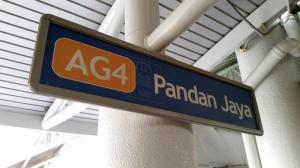 AG4 – Pandan Jaya
AG4 – Pandan Jaya
Continuing the botanical streak, this station’s name means “victorious pandanus”, but I was told their display had been removed. I shot the commercial cardboard decoration in the service counter window instead.
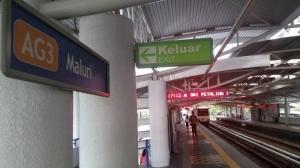 AG3 – Maluri
AG3 – Maluri
I don’t know what Maluri means and I didn’t understand what the guy I asked was saying, but I found no sign of a Hari Raya display here. I heard thunder from the distant hills and a cool breeze dried my sweat as I waited on the platform.
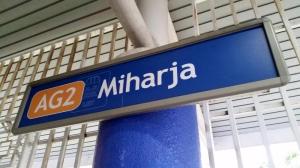 AG2 – Miharja
AG2 – Miharja
More luck here, with a couch, decorative crinkled paper discs, and collection of Hari Raya greeting cards.
It began to pour and the train waited a little at the station before continuing.
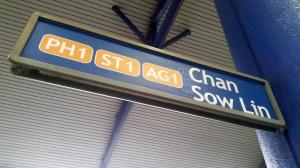 ST1-PH1-AG1- Chan Sow Lin
ST1-PH1-AG1- Chan Sow Lin
Quite different from others with its geometric abstraction, like a work of Islamic art, capped by colour-coordinated cards and ketupats. The top display of the line so far at this junction station, which I think is the only stop with a Chinese name.
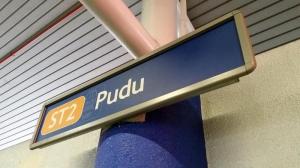 ST2 – Pudu
ST2 – Pudu
Starting to show its age, with a few letters fallen off the sign and the right-hand pillar-case collapsing, but still a cheerful sight. The guard who saw me admiring the arrangement thought it needed a third cartoon character to complete the scene so took a photo with me in the middle.
I thought the hanging ketupats were prettier, with duit raya envelopes for end-of-Ramadan gifts of pocket money (I described this practice in my first post).
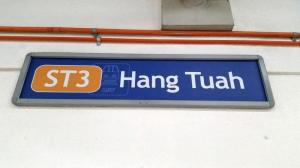 ST3 – Hang Tuah
ST3 – Hang Tuah
An interchange station with the monorail, near Kuala Lumpur’s “Star Walk” shopping precinct. And this Hari Raya display was the star of the entire LRT network, the biggest in every way. The side-show at right had the best-equal real leaf ketupats I saw, in both the iconic crosshatched diamond and plainer triangular forms.
Dominating the transit hall was the main feature, a kampung or village house of white Styrofoam, including a rooster on the roof.
I was joined in my admiration by characters in the style of Malaysia’s leading cartoonist Lat (see Wikipedia). I also liked the innovative white ketupats at left, with their elegant Chinese-looking patterns.
I passed a bonus display on the station’s namesake, the legendary Malay hero Hang Tuah, as I headed out for a snack of roti sardin: sardine and onion wrapped in thin layers of dough and fried.
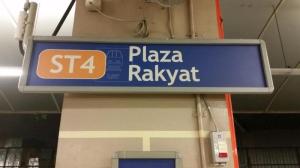 ST4 – Plaza Rakyat
ST4 – Plaza Rakyat
Back to a good example of the usual style of display, with bright coloured checkers and flowers inside a village fence, and information sheets on ketupat.
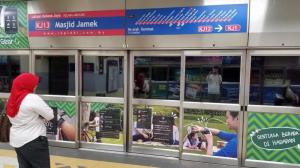 ST5 – Masjid Jamek
ST5 – Masjid Jamek
This station is at the junction of the two rivers for which the city is named: Kuala Lumpur literally means “muddy confluence”. It’s also at the intersection of the two LRT lines and I explored the Hari Raya theme of forgiveness here in Rapid KL Ramadan Part Two. Outside the station I found a life-size character from Lat, the cartoonist who inspired the models two stations back.
At a street stall I paid two ringgits for three large samosas with different fillings to fortify myself for the northern stretch.
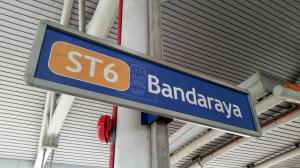 ST6 – Bandaraya
ST6 – Bandaraya
Artificial roses along a kampung fence.
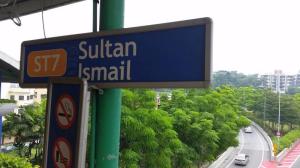 ST7 – Sultan Ismail
ST7 – Sultan Ismail
The highlight here was the domed tower, probably recycled from last year’s Rapid KL theme of mosques.
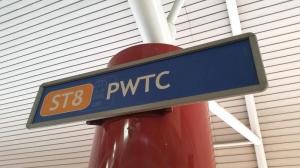 ST8 – PWTC
ST8 – PWTC
A vine trellis and china tea set were the original features at the Putra World Trade Centre stop that overlooks some small river rapids.
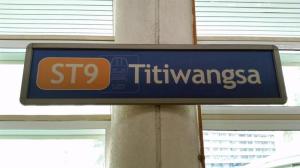 ST9 – Titiwangsa
ST9 – Titiwangsa
Near my favourite park in town, where locals play water polo on lovely lakes, but with no display to be found.
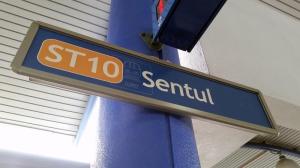 ST10 – Sentul
ST10 – Sentul
I guessed this was partly disassembled from its former glory, so I just zoomed from the ticket gate.
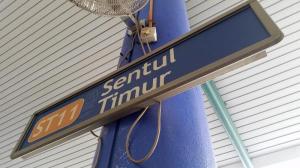 ST11 – Sentul Timur
ST11 – Sentul Timur
At the end of the line, with flowers blossoming in the low sun, the curtains reminded me of a wedding canopy.
Outside the station, new concrete apartments were under construction, towering over the historical suburb with its Hindu and Buddhist temples. I hope KL in 10 years won’t have lost its soul.
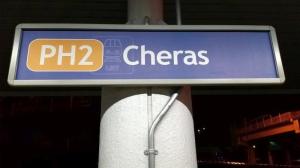 PH2 – Cheras
PH2 – Cheras
Cartoon coconut trees and tinsel at the 48th station I visited, completing my two-week mission.
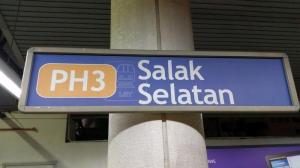 PH3 – Salak Selatan
PH3 – Salak Selatan
Cardboard cut-outs and pelita lamps.
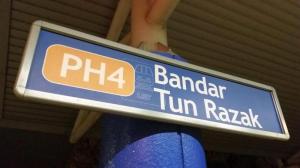 PH4 – Bandar Tun Razak
PH4 – Bandar Tun Razak
An outdoor scene, with a pot to boil the ketupat and a wok with paddle for dodol. Rice flour, coconut milk, palm sugar, and sometimes the pungent fruit of durian, are stirred for up to 8 hours in villages at Hari Raya to prepare this sweet and sticky toffee.
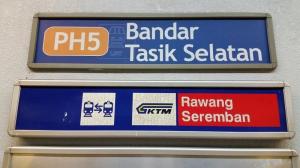 PH5 – Bandar Tasik Selatan
PH5 – Bandar Tasik Selatan
No Raya display found.
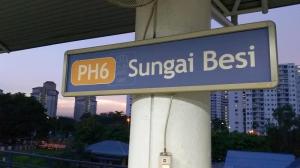 PH6 – Sungai Besi
PH6 – Sungai Besi
The display from behind the ticket gates:
And the front view from the other side:
Having swiped out of the system, I took a dinner break: char kway teow or fried flat noodles, washed down with a cool kopi ais.
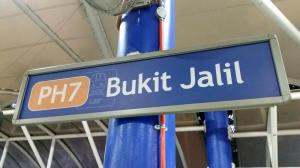 PH7 – Bukit Jalil
PH7 – Bukit Jalil
Out here there’s more greenery and the track passes arenas built for the 1998 Commonwealth Games. Across from the platform is Bukit Jalil National Stadium, the largest in Southeast Asia, with three tiers of 87,411 seats. The station display is a winner as well – the biggest and best show on this branch of the line. Real palms, ketupats of transparent cellophane that I haven’t seen before, and branches ready to burn under pot and wok.
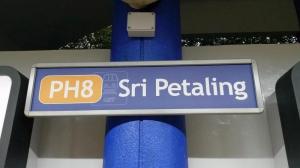 PH8 – Sri Petaling
PH8 – Sri Petaling
The terminal station is next to the International Medical University, where my former University of Auckland biochemistry lecturer now works. Less action here, for a lower key end to the line.
So the top stop question: out of 25 stations on the Ampang line, which had my favourite decorations? PH7 Bukit Jalil takes the prize for the Sri Petaling branch.
The junction at AG1 Chan Sow Lin most brightened up my day on the Ampang segment.
And the display that gave the most delight, my overall Rapid KL Ramadan winner, which most impressively broke out of the coloured checkered ketupat box, was clearly ST3 Hang Tuah.
Last week I saw this station’s polystyrene props had been replaced with Malaysian flags for Independence Day next week.
